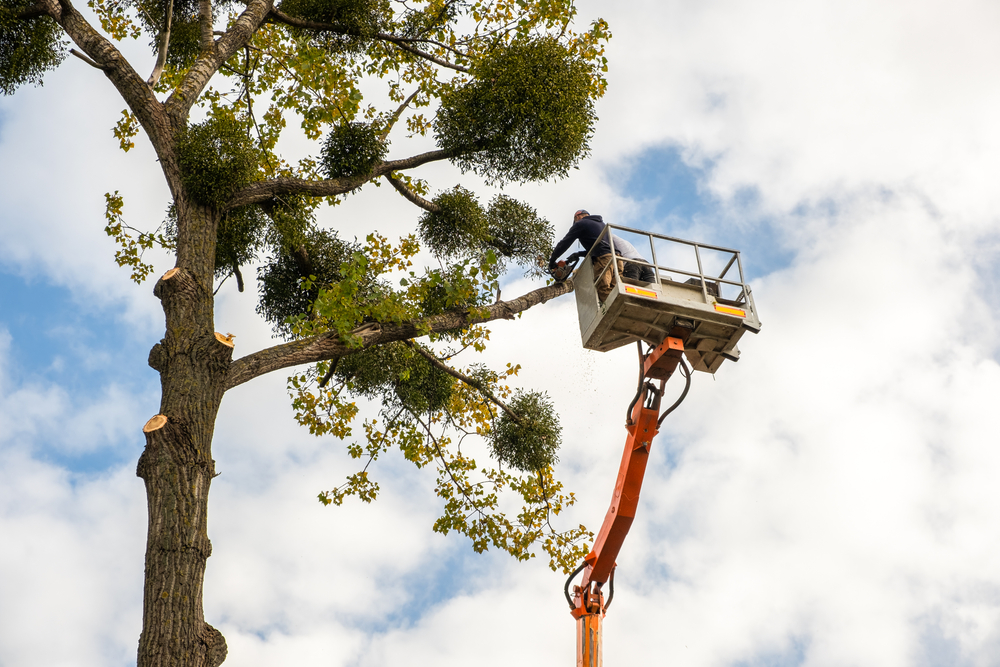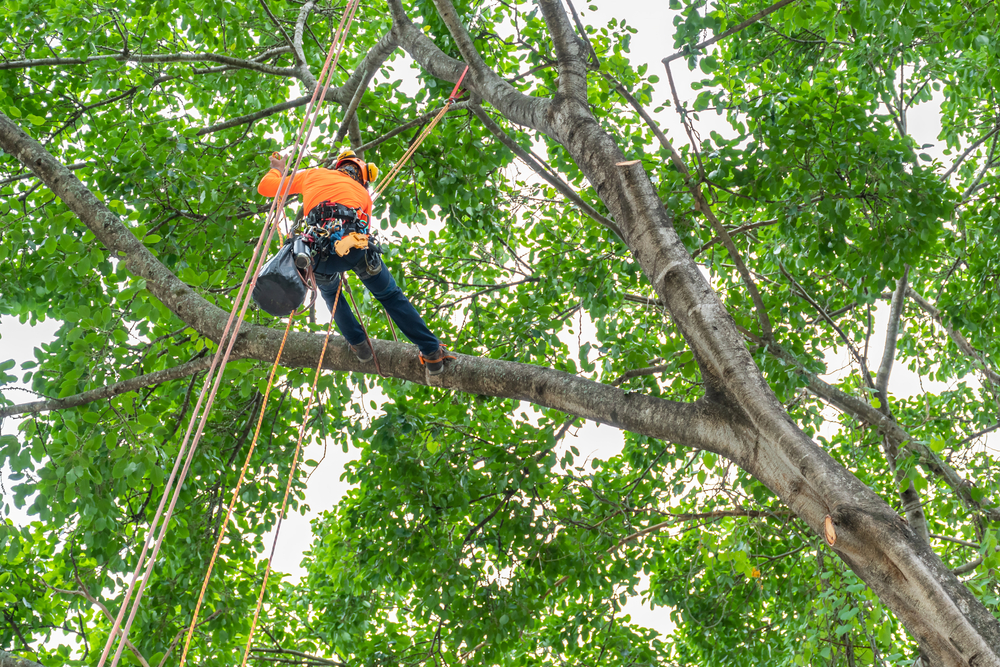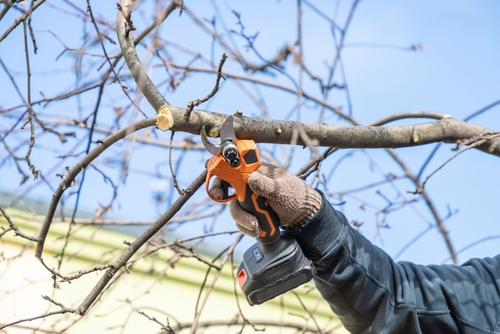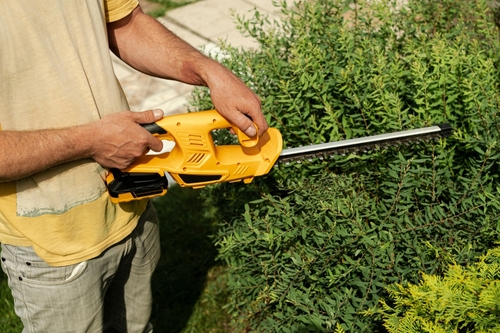Tree & Garden Care Services
Tree Maintenance and Care
Importance of Tree Maintenance in North Bay

Tree Selection for North Bay's Climate
Choosing local tree species offers several advantages. Our native trees are well-adapted to the region’s conditions, resulting in lower maintenance and greater resilience. Trees like the Sugar Maple (Acer saccharum), White Pine (Pinus strobus), and White Spruce (Picea glauca) thrive here due to their natural adaptation.
- Sugar Maples provide vibrant fall colors.
- White Pines offer great wind resistance.
- White Spruce is perfect for year-round greenery.
Planting native species supports local wildlife and preserves the ecological balance. These trees are more resistant to local pests and diseases, making them a sturdy and sustainable choice.
It’s crucial to consider trees that can endure North Bay’s long winters and mild summers. Some tree varieties are more hardy, providing needed durability against fluctuating temperatures and occasional storms typical of Northern Ontario.
- Red Oak (Quercus rubra) is tolerant of various soil types.
- Balsam Fir (Abies balsamea) can handle cold, snowy conditions.
- Serviceberry (Amelanchier spp.) is known for its hardiness and fruit production.
Using climate-resilient varieties ensures trees remain healthy and vigorous, even with the area’s demanding weather patterns. This approach minimizes the risk of tree loss and promotes a thriving, green landscape throughout the year.

Planting and Early Care
When planting trees, we begin by selecting the right species for the location and soil type. Using a spade, we dig a hole that is twice the width of the tree’s root ball but no deeper.
It’s important to position the tree in the center of the hole with the root flare just above ground level. Once in place, we fill the hole with native soil, ensuring there are no air pockets. Compacted soil can stunt root growth, so we take care to backfill gently.
Watering is essential during the first few weeks after planting. We water deeply to ensure the roots are well-hydrated, typically applying about 10-15 gallons per week.
Applying a 2-4 inch layer of mulch, such as wood chips or bark, around the base of the tree helps retain moisture and regulate soil temperature.
Mulch should not touch the trunk to prevent rot and pests. We keep a small gap between the mulch and the tree base, usually around 2-3 inches.
Young trees may need support to withstand wind and encourage upright growth. We use stakes and flexible ties, placing the stakes outside the root ball and at a distance that allows the tree some movement.
Proper installation involves tying the tree loosely to avoid girdling and damage to the bark. We check the ties regularly, especially after storms or heavy winds, adjusting them as necessary.
Typically, support structures remain in place for one growing season, after which we remove them to allow the tree to strengthen naturally.

Seasonal Maintenance Practices
Spring is the time for us to assess and prepare our trees for the growing season. We start by inspecting trees for winter damage, looking for broken limbs and any signs of disease. Pruning is essential to remove dead or weak branches which can affect tree health.
We also apply fertilizers to support the tree’s new growth. Ensuring the soil has adequate nutrients encourages robust development. Mulching around the base helps retain moisture, suppress weeds, and moderate soil temperatures.
During summer, our focus shifts to maintaining tree health amid hotter and sometimes drier conditions. Watering is critical, especially for young trees. Water deeply and infrequently to promote deep root growth rather than surface roots.
We monitor for pests and diseases that thrive in warm weather. Early detection and treatment can prevent serious damage. Structural pruning may be performed to ensure the branches do not interfere with any structures and to maintain the tree’s shape.
In the fall, we prepare the trees for the upcoming winter and wrap up the growing season. Fallen leaves should be raked and removed from the base of the trees to prevent fungi and other diseases.
Hydrating the trees before the ground freezes ensures they go into winter healthy. Inspecting for any remaining dead branches and removing them can prevent winter breakage from snow and ice. We may also apply a slow-release fertilizer to give trees the nutrients they need for the dormant season.
Winter protection involves safeguarding trees against harsh weather conditions and potential damage. We use tree wraps around the trunks of young or thin-barked trees to protect them from sunscald and frost cracks.
Applying an anti-desiccant spray on evergreens can reduce moisture loss. Heavy snowfall may require us to gently brush snow off branches to prevent breakage. For high winds or snowstorms, we can also use tree stakes to support younger trees and prevent them from toppling.

Pruning and Trimming
Pruning young trees focuses on establishing a strong and stable structure. During the early years, we aim to remove any damaged or broken branches. This prevents potential issues later on. We also focus on shaping the tree by removing competing leaders and promoting a single, dominant trunk.
Thinning out crowded branches allows light and air to penetrate the canopy, which is crucial for healthy growth. Ensuring proper spacing of branches also sets up the tree for minimal corrective pruning in the future.
Maintenance pruning is vital for mature trees to maintain health and safety. We typically remove dead, diseased, or weak branches, which can cause hazards during storms. This practice reduces the risk of branches falling and causing damage.
Canopy thinning helps improve air circulation and reduces wind resistance, lowering the chance of storm damage. We also remove any crossing or rubbing branches to prevent wounds that could become entry points for diseases. This regular upkeep ensures the tree remains structurally sound and visually appealing.
Pruning is not just about aesthetics but also plays a critical role in safety and disease prevention. Regular inspections allow us to identify diseased or pest-infested branches early. Removing these branches helps stop the spread to other parts of the tree or neighboring trees.
Using proper tools and techniques minimizes the risk of infection at the cut site. Disinfecting tools between cuts is essential to prevent transferring pathogens. Additionally, removing weak or damaged branches reduces the likelihood of breakage, ensuring a safer environment around the trees.
By adhering to these best practices in pruning and trimming, we can maintain healthy, beautiful trees in North Bay.

Tree Health Monitoring
Monitoring tree health involves regular assessments to detect pests and diseases, ensure soil quality and nutrients are optimized, and manage hydration to prevent drought stress.
Regular inspections are critical for identifying signs of pests and diseases. We check for damaged leaves, unusual growths, and discolored bark.
We may use traps to catch pests like borers and beetles or check for fungal spores. Early detection allows for prompt intervention, which can include natural predators, chemical treatments, or pruning infected areas to prevent spread.
Healthy soil is the foundation of a thriving tree. We assess soil composition by testing pH levels, organic matter, and nutrient content, including nitrogen, phosphorus, and potassium.
Amendments like compost or specific fertilizers can be added to address deficiencies. We also improve soil structure to enhance root penetration and oxygen availability. Mulching helps retain moisture and regulate temperature.
Proper hydration is key, particularly during dry spells. We monitor moisture levels using tools like tensiometers or soil moisture probes. Trees may require deep watering techniques to ensure water reaches the root zone.
Using a drip irrigation system or soaker hoses can provide consistent moisture. Mulching around the base also helps retain water and reduce evaporation. Detecting early signs of drought stress, such as wilting or browning leaves, allows for corrective actions before irreversible damage occurs.

Professional Tree Services in North Bay
We should call an arborist when we notice signs of disease or damage in our trees. Symptoms like discolored leaves, unusual growth patterns, or visible fungi can indicate serious issues. Regular inspections can help us identify potential problems before they become severe.
Storm damage also necessitates a professional’s expertise. Heavy winds or ice storms can cause branches to break or trees to become unstable. In these cases, safety is a priority, and an arborist can assess and mitigate hazards effectively.
Additionally, we might require arborist services for routine maintenance. Pruning and trimming not only enhance the tree’s appearance but also promote healthy growth and prevent dangerous overgrowth near structures or power lines.
Tree care professionals in North Bay offer a variety of services tailored to our needs.
Tree Removal: This is critical for diseased or dead trees that pose safety risks. Licensed arborists can safely remove these trees, ensuring that surrounding structures and landscapes are protected.
Stump Grinding: After tree removal, eliminating the stump is essential to prevent pests and improve the aesthetics of our yards. Local experts use specialized equipment to grind stumps efficiently.
Pruning and Trimming: These services enhance tree health and structure. Regular pruning removes weak or damaged branches, reducing the risk of accidents and contributing to the tree’s longevity.
Emergency Services: During storms or unexpected events, local tree care providers offer emergency services. We can rely on their quick response to address urgent safety concerns.
Construction Consultation: Arborists also assist with construction projects. They help us plan around existing trees, ensuring that development activities don’t compromise tree health or violate local regulations.
By leveraging these specialized services, we can maintain the health, safety, and beauty of our trees year-round.

Legal Aspects of Tree Ownership
Owning trees in North Bay, Ontario, involves understanding various legal responsibilities, including municipal bylaws and managing disputes with neighbors.
In North Bay, property owners must comply with specific municipal bylaws for tree maintenance and removal. These regulations often include obtaining permits for cutting down trees, especially if they are over a certain size or type. Bylaw 199_2015 is one such regulation that outlines the permissions required for tree removal on private property.
We must be aware that local authorities may have additional guidelines for tree planting distances from property lines to avoid future disputes. Generally, it’s advisable to plant small trees at least 2-3 feet away and large trees around 15 feet away from boundaries to prevent root damage and overhanging branches.
Neighborly disputes often arise due to tree branches or roots crossing property lines. According to Canadian law, if tree roots or branches from a neighbor’s property cause actual damage, we can seek a legal remedy. It’s important to engage in open communication with neighbors to address these issues amicably before escalating to legal action.
In North Bay, specific guidelines help mediate these disputes. We should document conversations and interventions accurately and, if necessary, consult with legal professionals who specialize in property and tree law. Legal notices or municipal mediation services are also valuable resources for resolving these disputes amicably and effectively.

Community Involvement
We offer several volunteer opportunities for those passionate about tree care. Local organizations, such as ArborWorks and Pearson Tree Service, often collaborate with city officials to plant trees and maintain public green spaces.
Volunteers help with tasks like tree planting, mulching, and watering. This hands-on experience is educational and rewarding, contributing to the community’s overall well-being. For anyone interested, opportunities can be found through local environmental groups or city-sponsored programs.
Educational workshops play a critical role in spreading awareness about tree health and care. These events, often hosted by certified arborists, provide valuable information on tree species, disease prevention, and proper maintenance techniques.
Workshops may include demonstrations on pruning or composting and seminars on the importance of urban forests. Civic groups and schools frequently participate in these events, making them accessible to all ages. By attending, our community members learn practical skills and develop a deep appreciation for our natural environment.

Frequently Asked Questions
What factors influence the cost of tree maintenance and care in North Bay?
The cost of tree maintenance and care in North Bay can vary based on several factors. These include the size and type of the tree, its location, and the specific services required. Additional costs may apply for emergency services or if the tree is in a hazardous condition.
Are there any services offering free tree maintenance for residents in North Bay, Ontario?
Currently, we don’t have information on services offering free tree maintenance for residents in North Bay. It’s advisable to consult local municipal programs or community initiatives that may provide such services on occasion.
How are tree removal services priced in the North Bay region?
Tree removal services in North Bay are typically priced based on the tree’s height, diameter, and location. The complexity of the job and the need for specialized equipment can also influence pricing. On average, costs might range between $525.12 and $665.88, as reported.
What qualifications should one look for in a North Bay tree service provider?
When choosing a tree service provider in North Bay, look for certifications such as those from the Province of Ontario in Urban Forestry and Arboriculture. Additionally, ensure that the provider has industry experience and positive customer reviews. Checking for insurance coverage is also essential.
When is the ideal season to book tree care services in North Bay?
What are the essential components of proper tree maintenance?
Proper tree maintenance involves regular pruning, soil care, and pest management. It also includes timely watering and fertilization. Investing in these elements helps ensure the healthy growth and longevity of the trees. Regular inspections for disease or structural issues are also crucial.
